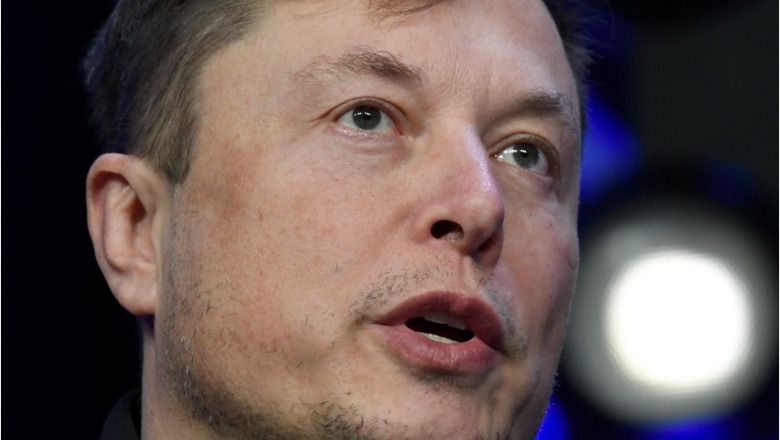
views
Elon Musk, CEO of Tesla and one of the world’s wealthiest individuals, has expressed his discontent with YouTube.
Tweeting on the microblogging site Twitter, Musk attacked YouTube’s service.
Elon Musk even referred to YouTube as a con artist, while saying that “YouTube seems to be nonstop scam ads”.
The Tesla CEO also tweeted a meme mocking YouTube for apparently not cracking down on misleading techniques in another tweet.
pic.twitter.com/2ELe1W5ZXC— Elon Musk (@elonmusk) June 7, 2022
Meanwhile, according to a statement from Google, YouTube does not tolerate spam, scams, or other misleading tactics that take advantage of the YouTube community. It also stated that the platform doesn’t accept content whose primary goal is to persuade others to abandon YouTube in favour of another platform.
YouTube is one of the most popular sites on the Internet. But users often express irritation regarding unskippable ads that run before, during and after videos.
Apart from the skip button to avoid YouTube ads, an ad blocker app can also help in case of mobile devices and some browsers. Such solutions block advertisements, not only on YouTube, but also on other websites. Pop-up advertising, banners, redirections and ad trackers that offer you promotions based on your previous online behaviour can all be removed with an efficient ad-blocker.
But not all ad-blockers remove YouTube ads.
According to an analysis by Omnicore, YouTube has over 122 million daily active users who watch over a billion hours of video every day, making it one of the most popular social media platforms in the world.
It is also the second-most popular search engine, trailing only Google, with over a billion hours of views per day (YouTube, 2021). According to the study, YouTube receives more search queries than other major search engine platforms such as Microsoft Bing, Yahoo, AOL, and Ask combined.
Controlling Ads
However, Google announced a new tool at its I/O developer conference that would give customers more control and insight over how their advertising is targeted across Google’s applications and sites, including Google Search, YouTube, and the Discover feed in the Google app, later this year.
In simple terms, users will be able to interact with the ad in a variety of ways by using a new three-dot menu that will appear on all ads across all sites. They’ll be able to like it, share it, block it, or report it, as well as see who paid for it and why they were targeted with it.
If users do not want to see such ads, they can use the embedded tools in the menu or visit the new ‘My Ad Center’ hub to notify Google. Users can access the hub by clicking the menu option that says “customise more of the ads you see” to be directed to the new experience.
According to Google, users will be able to learn more about how ads are personalised and gain control over how their data is used through the new My Ad Center hub. It is intended to address ads appearing on Google-owned and operated sites such as Search, YouTube, and Discover, but it does not apply to the Google Display Network.
It was also said that users will be able to turn on or off different types of ads by clicking the plus and minus buttons in a variety of categories such as fitness, vacation rentals, skincare, and many others. If anyone wants to see fewer beauty ads, for example, they can simply click to remove them from your lineup.
Most particularly, the new My Ad Center hub includes a large button at the top of the screen that allows users to turn off personalised ads entirely.
As per Tech Crunch, Google’s director of Ads Privacy and Trust, David Temkin said: “We see personalised ads as valuable and useful — just like personalised movie recommendations, personalised news recommendations, personalised commerce recommendations.”
He also explains that this feature gives users, for the first time, the ability to control the content of the ads they see, beyond just sensitive ads, and that the process is simple to use.
Read all the Latest Tech News here

















Comments
0 comment